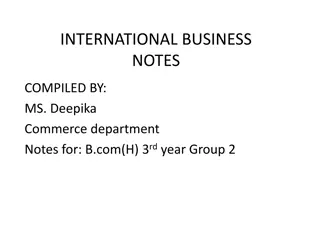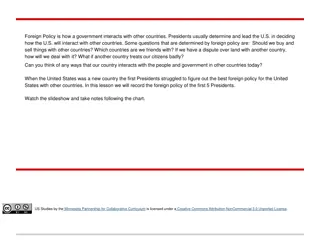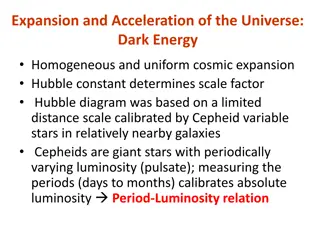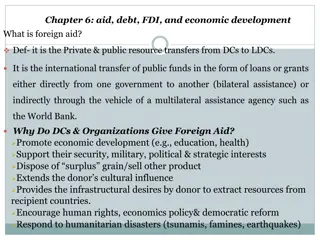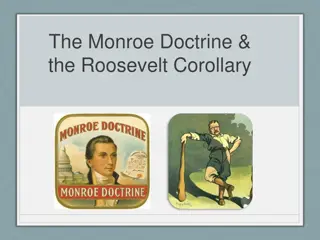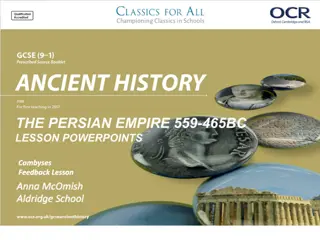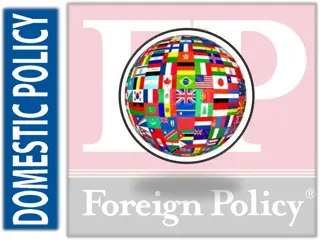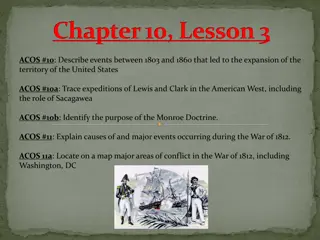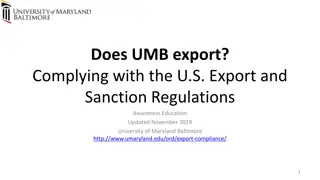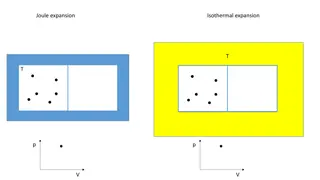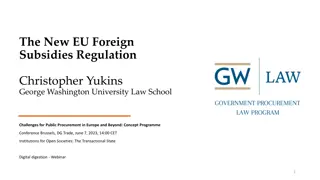APUSH Key Concept 4.3 Review: U.S. Foreign Policy and Expansion
The U.S.'s interest in foreign trade and expanding national borders influenced its foreign policy. Initiatives like the Monroe Doctrine and westward expansion led to conflicts over slavery, plantation slavery spread westward, and antislavery efforts increased in the North.
Download Presentation

Please find below an Image/Link to download the presentation.
The content on the website is provided AS IS for your information and personal use only. It may not be sold, licensed, or shared on other websites without obtaining consent from the author. Download presentation by click this link. If you encounter any issues during the download, it is possible that the publisher has removed the file from their server.
E N D
Presentation Transcript
APUSH REVIEW: KEY CONCEPT 4.3 (REVISED, 2015 EDITION) EVERYTHING YOU NEED TO KNOW ABOUT KEY CONCEPT 4.3 TO SUCCEED IN APUSH HACKETT S IN MASSACHUSETTS. THANKS SO MUCH! SHOUT OUTS TO THE FOLLOWING CLASSES: MR. PIPPIN S, MR. JOHNSON S, AND MR.
KEY CONCEPT 4.3 The U.S. interest in increasing foreign trade and expanding its national borders shaped the nation s foreign policy and spurred government and private initiatives. Page 50 Big Idea Questions: What was the message of, and impact, of the Monroe Doctrine? How did westward expansion lead to conflicts over slavery?
KEY CONCEPT 4.3, I Struggling to create an independent global presence, the United States sought to claim territory throughout the North American continent and promote foreign trade. pf. 50 A) Post-LA Purchase, US sought to increase influence through: Exploration: Lewis and Clark Sought to find a waterway to the Pacific Gained immense knowledge about the environment and Natives Military Actions: Aroostock War - settled ME-Canada boundary American Indian Removal: Indian Removal Act -> Trail of Tears - Moved Natives west of MS River Diplomatic Efforts Monroe Doctrine: Warned Europe to stay out of the Western Hemisphere In return, the US would stay out of European affairs
KEY CONCEPT 4.3, I B) Those living on the frontier tended to favor expansion: More land available for farming Resistance by Native Americans: Black Hawk War (IL) - 1832: Native Americans sought to gain land ceded from 1804 back Seminole Wars (series of wars in early-mid 19th century) 1st - Seminole Natives in FL were forced to move to Central Florida 2nd - Federal government sought to remove Seminoles from Florida
KEY CONCEPT 4.3, II The United States acquisition of lands in the West gave rise to contests over the extension of slavery into new territories. pg. 51 A) Spread of plantation slavery west of Appalachians: Deep South - Cotton Belt - MS, AL, LA Many slaveholders moved to more fertile land (cotton, like tobacco exhausted land) B) Antislavery efforts increased in the North: Women s Rights and Abolitionism were closely linked Lydia Maria Child - abolitionist and women s rights advocate William Lloyd Garrison s The Liberator (1831)- called for immediate and uncompensated end to slavery Slavery in the South: 3/4 did NOT own slaves Slavery was defended by Southern leaders and writers: George Fitzhugh and John C. Calhoun
KEY CONCEPT 4.3, II C) Missouri Compromise (Compromise of 1820): 3 parts: MO would enter the country as a slave state ME would enter the country as a free state 36 60 - above free, below slave in LA Purchase Impact: Tensions still existed, temporary solution between defenders and supporters of slavery In the 1850s tensions would come to the forefront
TEST TIPS Multiple-Choice and Short Answer: Examples of US seeking dominance of North America and Western Hemisphere (Monroe Doctrine) Conflicts with Native Americans Missouri Compromise Essay Questions: Impacts of westward expansion on: Natives Tensions between the North and South
SEE YOU BACK HERE FOR 5.1! Thanks for watching Good luck in May!






